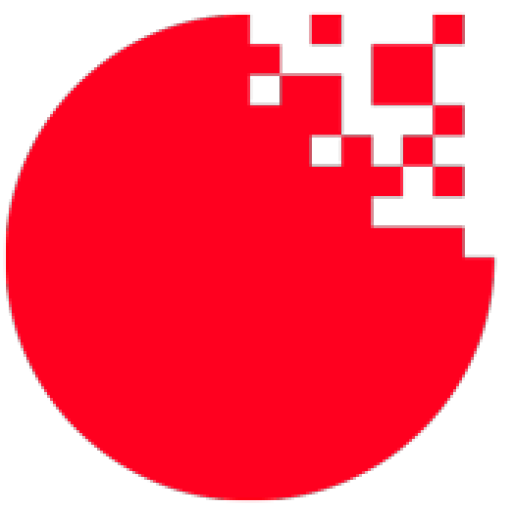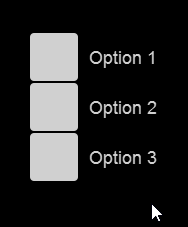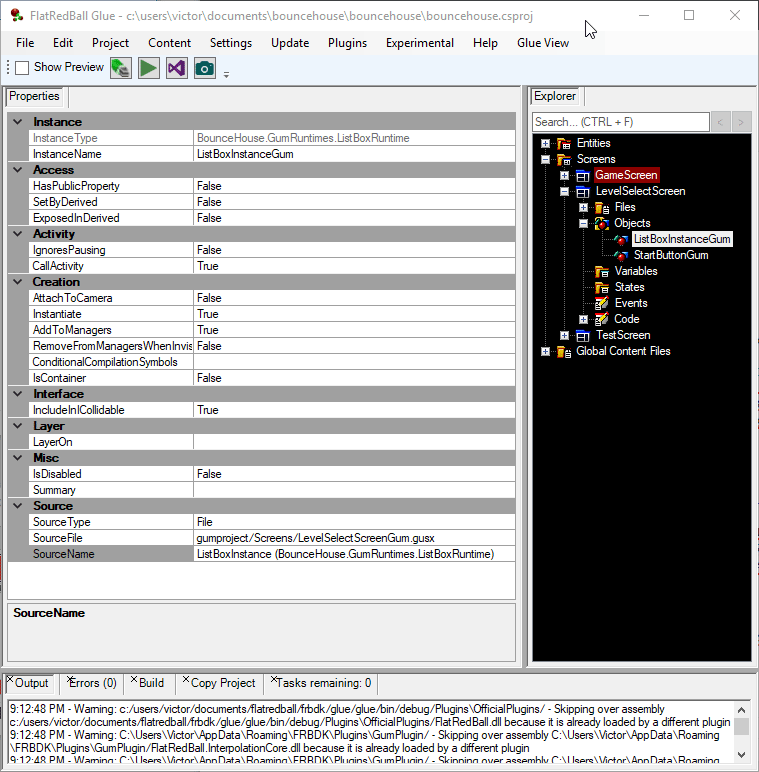Introduction
The latest release of FlatRedBall, Gum, and Gum plugin in Glue includes support for FlatRedBall.Forms version 1.2. This version adds the following functionality:
- New StackPanel control
- New AddChild method for all FrameworkElements (allowing parent/child relationship to be created without accessing the Visual object)
- Support for same-named Gum runtime objects in different folders with the addition of sub-namespaces (see breaking changes below)
StackPanel
The StackPanel control allows stacking contained children either horizontally or vertically. Note that this functionality is not new, Glue has had stacking available before FlatRedBall.Forms 1.0. The StackPanel simply provides a control similar to the WPF StackPanel to simplify the creation of UI in code using a familiar interface.
We can compare how to create a StackPanel in FlatRedBall.Forms 1.2 and compare it to how this would have been done in 1.1.
FlatRedBall.Forms 1.2
var stackPanel = new StackPanel(); stackPanel.Visual.AddToManagers(); // now add 3 buttons stackPanel.AddChild(new Button()); stackPanel.AddChild(new Button()); stackPanel.AddChild(new Button());
FlatRedBall.Forms 1.1
var stackPanel = new UserControl(new InvisibleRenderable()); stackPanel.Visual.AddToManagers(); stackPanel.Visual.ChildrenLayout = ChildrenLayout.TopToBottomStack; // add 3 buttons var button = new Button(); button.Parent = stackPanel.Visual; button = new Button(); button.Parent = stackPanel.Visual; button = new Button(); button.Parent = stackPanel.Visual;
Notice that the AddChild function helps make StackPanels even simpler to work with, as opposed to setting the parent on the desired child – which is both wordy and also confusing.
For additional information on the StackPanel control, see the StackPanel page.
Folders and Sub-Namespaces
Previously all Gum runtime objects would be added to the project in the same folder and part of the same namespace – YourProjectName.GumRuntimes .
The latest version of the Gum plugin for Glue adds controls to namespaces matching the folder structure in Gum.
For example, consider a control called ButtonPanel which is part of a ControlGalleryPanels folder:
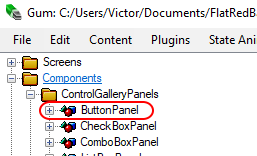
The runtime object will be generated to be part of the YourProjectName.GumRuntimes.ControlGalleryPanels namespace.

This change allows for multiple controls with the same name to be added to a project, as long as they exist in different folders.
Breaking Changes
Since components now include subfolders in their namespace, existing projects which have components in subfolders may no longer compile until some changes are made.
Fixing Partials
Any component with a matching partial will not compile because the partial may still be using the old namespace. To fix this problem:
- Open the generated code for the given component
- Copy the namespace
- Open the custom code file for the given component
- Paste the namespace
Fixing Code References
Any reference to a component which has had its namespace changed must be updated. Of course, generated code should update automatically, but custom code may need to have a qualifying namespace changed, or to have its using statements updated.
Fixing Gum References from Files
If you have accessed an object from within a Gum file in Glue, and that type is now in a subfolder, you may have compile errors in your generated code for your Glue Screen/Entity.
For example, the following shows a Screen which is referencing two objects:
- ListBoxInstanceGum
- StartButtonGum
The components for these two types are in a subfolder:

As is currently set up, the generated code is referencing the files in the incorrect namespace. Also notice that the initialization code is not generating properly:
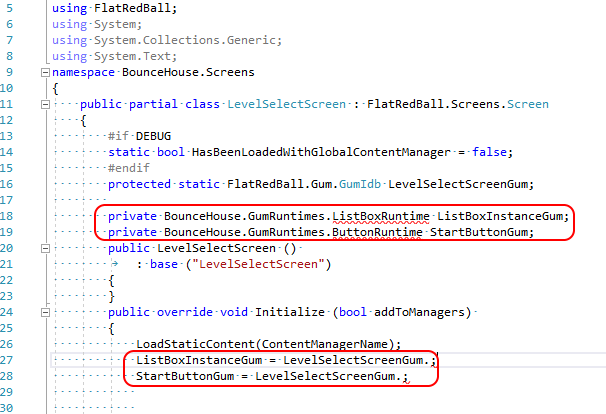
These errors can be fixed by re-assigning the SourceName for the offending objects in Glue:
Notice that the types SourceName dropdown has the correct type in parenthesis.
